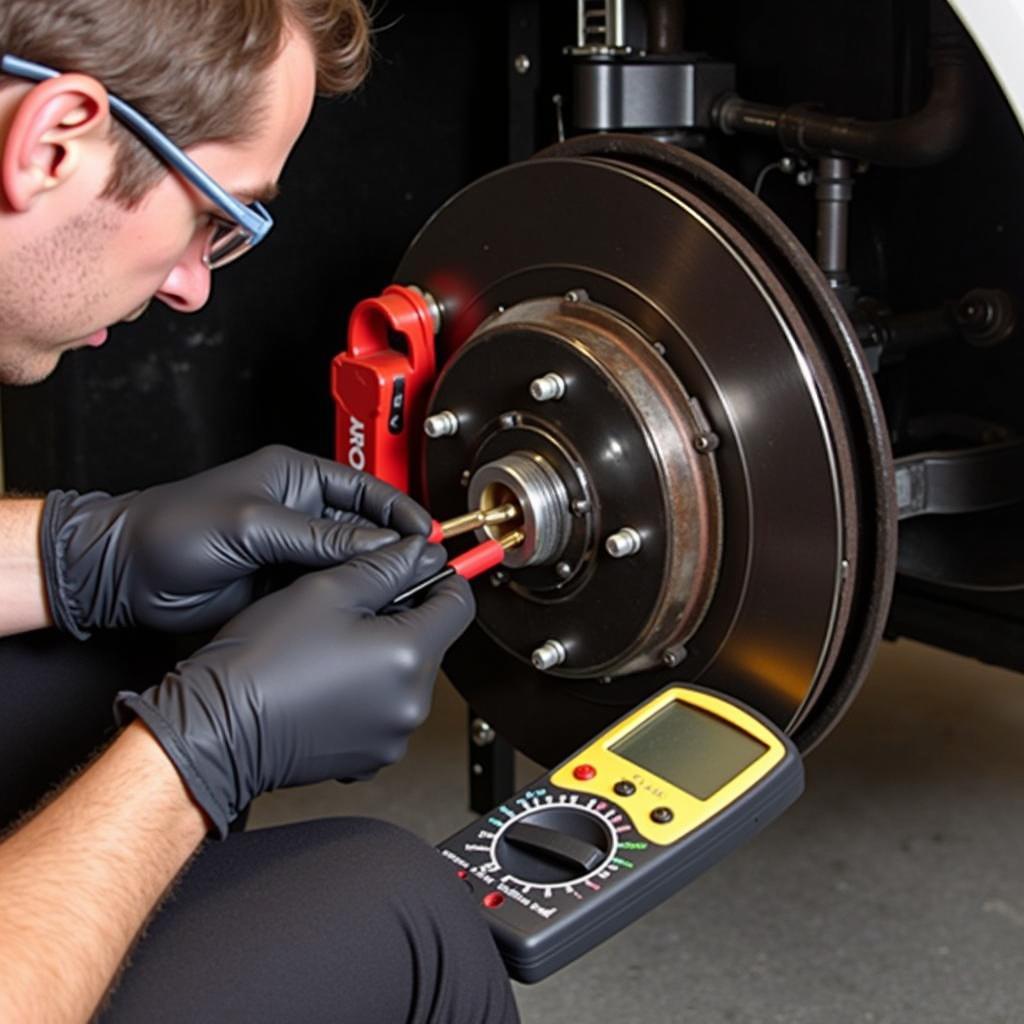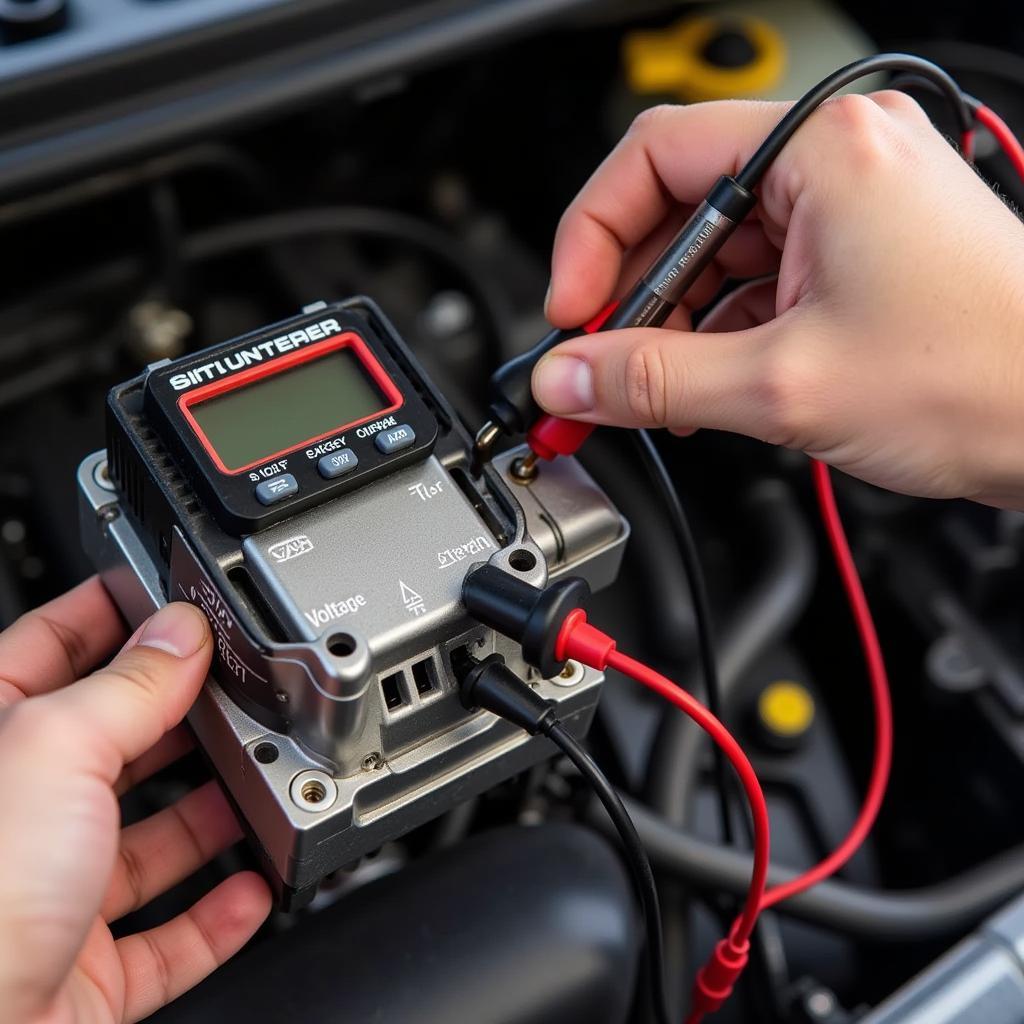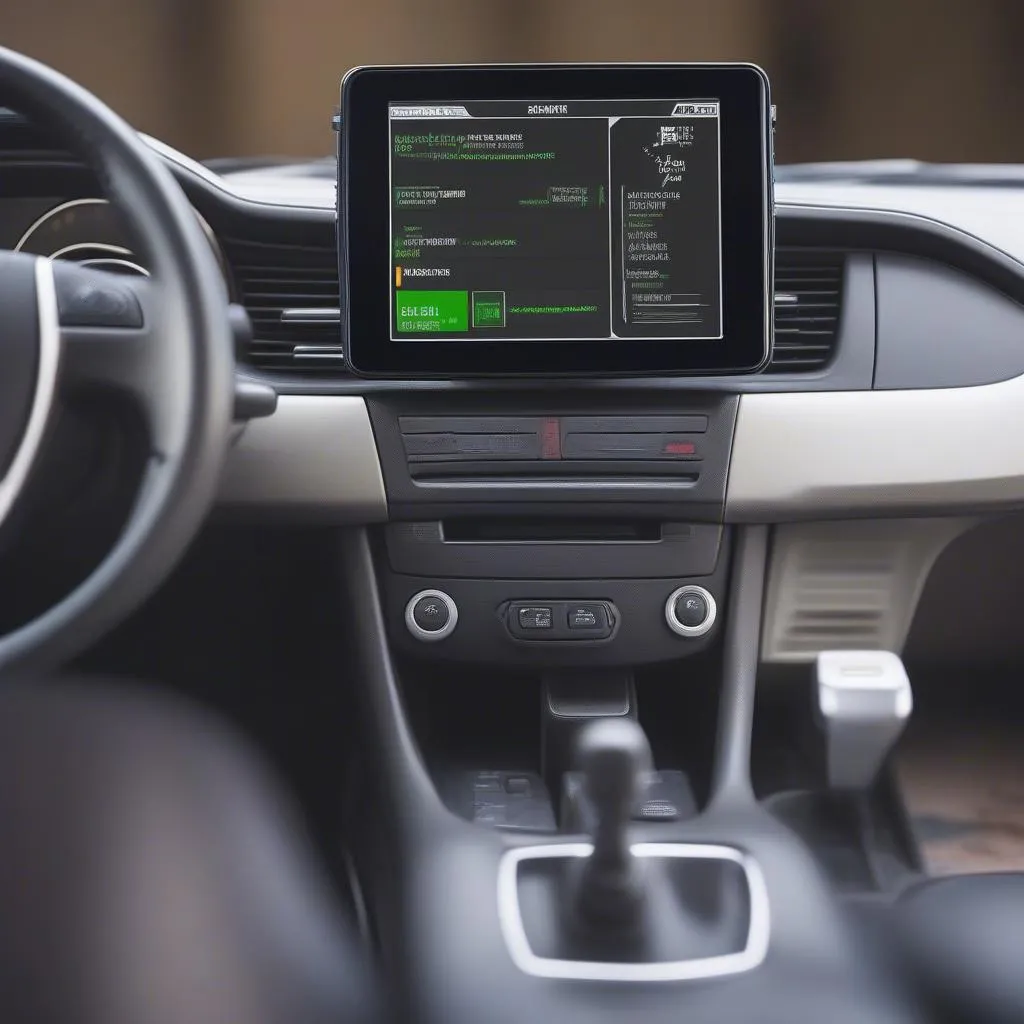The Warner Electric G50SE brake is a common electronically-released spring-applied brake found in various industrial and commercial vehicles. Its robust design ensures reliable stopping power and holding force for heavy-duty applications. However, like any electromechanical system, the G50SE brake can experience issues that hinder its performance. This comprehensive guide explores common problems, their causes, and step-by-step troubleshooting techniques, empowering you to diagnose and potentially resolve issues with your Warner Electric G50SE brake system.
While this guide offers valuable insights into resolving common problems, remember that professional assistance is crucial for complex issues or when dealing with brake systems in safety-critical applications. Always prioritize safety and consult a qualified technician when necessary.
Understanding Your Warner Electric G50SE Brake
Before delving into troubleshooting, it’s crucial to grasp the fundamentals of the G50SE brake system. This understanding forms the foundation for effective diagnosis and repair.
The G50SE is an electromagnetic brake that uses electrical energy to release a spring-applied braking force. In its normal state (power off), powerful springs hold the brake pad against the brake disc, effectively stopping or holding the load. When the brake is energized, an electromagnetic coil creates a magnetic field that overcomes the spring force, retracting the brake pad and allowing movement.
Key Components:
- Brake Housing: Contains the electromagnet, armature, and spring mechanism.
- Armature: Moves in response to the electromagnetic field, releasing or applying the brake.
- Brake Disc: The rotating component that the brake pad clamps onto.
- Friction Material: The brake pad material that generates friction against the disc.
- Electromagnet: An electrical coil that creates the magnetic field.
Common Warner Electric G50SE Brake Problems and Troubleshooting Tips
Here are some frequent issues encountered with the G50SE brake and how to address them:
1. Brake Fails to Release
Possible Causes:
- Loss of Power or Faulty Wiring: The brake won’t release if it doesn’t receive power.
- Damaged Electromagnet: A malfunctioning electromagnet can’t generate the required magnetic field.
- Seized Armature: Physical obstructions or corrosion can prevent the armature from moving freely.
Troubleshooting Steps:
- Check Power Supply: Use a multimeter to verify voltage at the brake coil terminals. Ensure the wiring is secure and free from damage.
- Test the Electromagnet: With the brake de-energized, check the resistance across the electromagnet coil terminals using a multimeter. Compare the reading to the manufacturer’s specifications.
- Inspect the Armature: Visually inspect the armature for signs of damage, rust, or debris. Try manually moving the armature to check for binding or resistance.
 Checking G50SE Brake Wiring
Checking G50SE Brake Wiring
2. Brake Fails to Engage or Slipping
Possible Causes:
- Worn Friction Material: Over time, the brake pad’s friction material wears down, reducing braking force.
- Contaminated Friction Surfaces: Oil, grease, or other contaminants can hinder friction, causing slippage.
- Incorrect Air Gap: An improper distance between the armature and the brake disc can lead to inadequate engagement.
Troubleshooting Steps:
- Inspect the Friction Material: Check the thickness of the friction material. If it falls below the manufacturer’s wear limit, replace the brake pad.
- Clean the Friction Surfaces: Thoroughly clean the brake disc and armature surfaces using a brake cleaner or isopropyl alcohol. Ensure they are free from any contaminants.
- Check and Adjust the Air Gap: Using a feeler gauge, measure the air gap between the armature and the brake disc. Adjust the air gap to the manufacturer’s specifications.
3. Brake Overheating
Possible Causes:
- Excessive Braking: Frequent or prolonged braking cycles can generate excessive heat.
- Dragging Brake: A brake that doesn’t fully release can cause continuous friction and overheating.
- Inadequate Heat Dissipation: Poor ventilation or environmental factors can hinder heat dissipation.
Troubleshooting Steps:
- Assess Braking Practices: Evaluate if the brake is being used more frequently or for longer durations than necessary. Modify operational procedures to minimize unnecessary braking.
- Investigate for Dragging Brake: Check for any issues preventing the brake from fully releasing, such as a faulty electromagnet or a seized armature (refer to problem #1).
- Improve Ventilation: Ensure adequate airflow around the brake to promote heat dissipation. Consider using a fan or relocating the brake to a cooler environment if necessary.
Remote Diagnostics and Software Solutions
In today’s technologically advanced world, remote diagnostics and software solutions play a crucial role in troubleshooting and maintaining complex automotive systems, including the Warner Electric G50SE brake.
By leveraging telematics and data logging capabilities, manufacturers and specialized service providers can remotely access real-time data from the brake system, such as:
- Current and Voltage: Monitoring electrical parameters helps identify potential issues with the power supply, wiring, or electromagnet.
- Temperature Sensors: Real-time temperature data from the brake system allows for early detection of overheating issues, preventing further damage.
- Actuation Cycles and Duration: Analyzing braking patterns can provide insights into potential overuse or identify instances of a dragging brake.
This remote diagnostic capability offers numerous benefits:
- Faster Troubleshooting: Technicians can remotely diagnose problems without requiring physical access to the vehicle, reducing downtime and improving efficiency.
- Proactive Maintenance: Real-time data analysis allows for predictive maintenance, identifying potential issues before they escalate into costly repairs or downtime.
- Optimized Performance: Remote software updates can enhance brake system performance, improve efficiency, and ensure compatibility with the latest technologies.
Conclusion
Understanding the common problems associated with the Warner Electric G50SE brake and following the troubleshooting steps outlined in this guide can help you diagnose and address many issues. However, it is crucial to remember that brake systems are critical safety components. Always prioritize safety and consult a qualified technician for complex problems or when dealing with brake systems in safety-critical applications. By combining your knowledge with professional expertise, you can ensure the optimal performance and longevity of your Warner Electric G50SE brake system.


